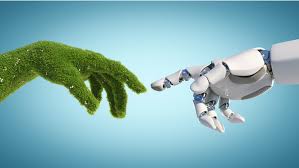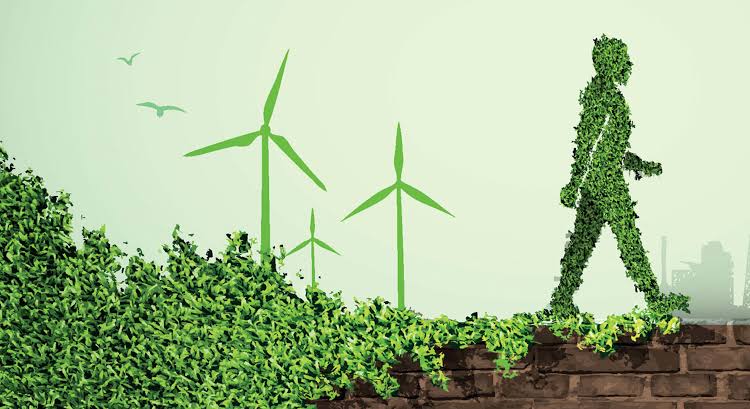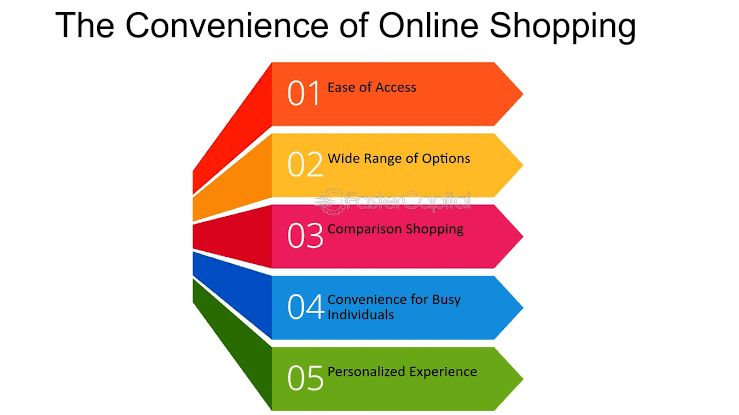
Tech vs Nature: Can They Coexist Harmoniously?
The debate of "Tech vs Nature" doesn't have to be a conflict. While technology has caused environmental degradation, it also holds the potential to restore and protect nature. With the rise of green innovations, sustainable development, and eco-conscious practices, tech can become a force for environmental good. Smart cities, renewable energy, AI for conservation, and climate tech prove that coexistence is possible.
✨ Raghav Jain

Introduction
Technology and nature are often portrayed as opposites—one artificial, the other organic. One constantly advancing, the other delicately balanced. As cities expand and machines dominate every aspect of life, many fear that nature is being pushed aside, sacrificed in the name of progress. But is it really a zero-sum game?
In truth, technology and nature don’t have to be in conflict. While modern developments have undoubtedly harmed ecosystems, the very same tools also hold the potential to protect, restore, and enhance our environment. The key question is not whether they can coexist, but how they can do so harmoniously.
This article dives deep into the complex relationship between technology and nature, exploring their historical tensions, current challenges, and future possibilities. As we stand at a turning point for both our planet and our progress, it's time to reimagine a world where innovation and ecology thrive side by side. The year 2025 finds humanity at a critical juncture, deeply immersed in a technologically advanced world that simultaneously grapples with escalating environmental challenges, prompting a fundamental question: can technology and nature truly coexist harmoniously, or are they inherently opposing forces locked in an inevitable conflict? The pervasive influence of technology, from the ubiquitous connectivity of the internet of things to the transformative power of artificial intelligence and genetic engineering, has undeniably reshaped our lives and societies, yet this progress has often come at the expense of the natural world, leading to deforestation, pollution, climate change, and biodiversity loss. However, a growing movement fueled by innovation and a deeper understanding of ecological principles suggests that technology, rather than being the antithesis of nature, can be a powerful tool for its preservation and restoration, ushering in an era where human ingenuity works in concert with natural systems to create a more sustainable and balanced future. This exploration delves into the complex relationship between technology and nature, examining the ways in which technological advancements can both harm and help the environment, and highlighting the key innovations and approaches that hold the promise of a harmonious coexistence in 2025 and beyond, encompassing areas such as renewable energy technologies, precision agriculture, environmental monitoring and conservation technologies, sustainable materials and manufacturing, circular economy solutions, carbon capture and storage, biomimicry and nature-inspired technology, smart cities and sustainable infrastructure, ecological restoration technologies, and ethical considerations and responsible innovation.
Renewable energy technologies stand as a cornerstone in the quest for a harmonious coexistence between tech and nature, offering a pathway to decouple human energy consumption from environmentally damaging fossil fuels, as solar power, wind power, hydropower, geothermal energy, and biomass energy have matured significantly in efficiency and affordability by 2025, providing viable alternatives for electricity generation, transportation, and heating, thereby reducing greenhouse gas emissions and mitigating climate change, with innovations in solar cell technology, such as perovskite and tandem cells, increasing efficiency and reducing manufacturing costs, while advancements in wind turbine design, including larger rotor diameters and floating offshore wind farms, are harnessing wind energy more effectively, alongside smart grids powered by AI optimizing energy distribution and integrating renewable sources more seamlessly, showcasing how technological innovation can directly address environmental challenges by providing cleaner and more sustainable energy solutions.
Precision agriculture leverages advanced technologies to optimize resource use in food production, minimizing environmental impact while maximizing yields, as sensors, drones, satellite imagery, and AI-powered analytics enable farmers to monitor soil conditions, water usage, nutrient levels, and pest infestations with unprecedented accuracy, allowing for targeted interventions, reducing the overuse of water, fertilizers, and pesticides, thereby minimizing pollution and conserving natural resources, with companies developing sophisticated agricultural robots for tasks like precision planting and harvesting, further enhancing efficiency and reducing labor, demonstrating how technology can contribute to more sustainable and environmentally friendly food production practices.
Environmental monitoring and conservation technologies provide crucial tools for understanding, protecting, and restoring natural ecosystems, as sensors, drones, satellites, and AI algorithms are being deployed to monitor air and water quality, track wildlife populations, detect deforestation, and assess the health of ecosystems in real-time, providing valuable data for conservation efforts and enabling more effective interventions, with acoustic monitoring using AI to identify and track endangered species, and drones equipped with thermal cameras detecting poachers, showcasing how technology can enhance our ability to understand and protect the natural world by providing critical data and enabling more efficient conservation strategies.
Sustainable materials and manufacturing processes are crucial for reducing the environmental footprint of technological production and consumption, as innovations in biomaterials, biodegradable plastics, recycled materials, and closed-loop manufacturing systems are minimizing waste, reducing reliance on virgin resources, and decreasing pollution associated with the production of electronic devices and other goods, with research into sustainable packaging materials derived from algae or fungi, and advancements in 3D printing using recycled plastics, demonstrating how technological innovation in materials science and manufacturing can contribute to a more circular and environmentally responsible economy.
Circular economy solutions aim to shift away from the traditional linear "take-make-dispose" model towards a more sustainable system where resources are kept in use for as long as possible, reducing waste and minimizing the need for new resource extraction, as technology plays a vital role in enabling the circular economy through platforms for product sharing and reuse, advanced recycling technologies that can recover valuable materials from electronic waste, and AI-powered systems for optimizing resource management and waste sorting, with companies developing innovative business models based on product-as-a-service and facilitating the repair and refurbishment of electronic devices, showcasing how technology can underpin a more sustainable and resource-efficient economic system.
Carbon capture and storage (CCS) technologies, while still facing challenges in scalability and cost, represent a technological approach to mitigating climate change by capturing carbon dioxide emissions from industrial sources and power plants and storing them underground or utilizing them in other industrial processes, as advancements in capture technologies and storage methods are making CCS a more viable option for reducing atmospheric carbon dioxide levels, particularly in sectors where emissions are difficult to abate through other means, with ongoing research exploring innovative ways to utilize captured carbon, such as in the production of building materials or fuels, demonstrating how technology can directly address the challenge of greenhouse gas emissions.
Biomimicry and nature-inspired technology involve learning from the designs and processes found in nature to create more sustainable and efficient technological solutions, as engineers and scientists are increasingly looking to biological systems for inspiration in areas such as materials science, robotics, and energy efficiency, with the development of adhesives inspired by gecko feet, and aerodynamic designs for aircraft based on bird wings, showcasing how nature itself can provide a blueprint for technological innovation that is inherently more sustainable and harmonious with the environment.
Smart cities and sustainable infrastructure leverage technology to create urban environments that are more efficient, livable, and environmentally friendly, as smart grids, intelligent transportation systems, green buildings, and waste management technologies are being integrated to optimize resource use, reduce energy consumption, minimize pollution, and improve the quality of life for urban dwellers, with the deployment of sensors and AI to manage traffic flow, optimize energy use in buildings, and monitor air quality in real-time, demonstrating how technology can contribute to creating more sustainable and harmonious urban environments.
Ecological restoration technologies utilize technological tools to aid in the recovery and rehabilitation of degraded ecosystems, as drones are being used for reforestation and seed dispersal, remote sensing technologies are monitoring the progress of restoration efforts, and data analytics are helping to optimize restoration strategies, with advancements in bioremediation techniques using microorganisms to clean up pollution, showcasing how technology can play a direct role in healing and restoring damaged natural environments.
Ethical considerations and responsible innovation are paramount in ensuring that the development and deployment of technology contribute to a harmonious coexistence with nature, as it requires a conscious and proactive approach to assessing the potential environmental and social impacts of technological advancements and prioritizing sustainability and ethical principles in research, development, and implementation, with frameworks for responsible AI development that consider environmental implications, and a growing emphasis on circular design principles that minimize waste and maximize resource efficiency, demonstrating the importance of integrating ethical considerations into the technological innovation process to ensure a positive and sustainable relationship with the natural world. In conclusion, the question of whether technology and nature can coexist harmoniously in 2025 is not a matter of inherent opposition but rather a challenge of intentionality and responsible innovation, as the advancements in renewable energy, precision agriculture, environmental monitoring, sustainable materials, the circular economy, carbon capture, biomimicry, smart cities, and ecological restoration demonstrate the immense potential of technology to be a powerful force for environmental preservation and restoration, and by embracing ethical considerations and prioritizing sustainability in our technological endeavors, humanity can forge a future where technological progress and the flourishing of the natural world are not mutually exclusive but rather mutually reinforcing, creating a more balanced and sustainable planet for generations to come.
A History of Conflict: The Rise of Technology, The Decline of Nature
Since the Industrial Revolution, the rapid expansion of machinery, fossil fuels, and mass production has led to deforestation, pollution, climate change, and loss of biodiversity. Cities were built at the expense of forests, and rivers were redirected or poisoned to support agriculture and manufacturing.
Examples include:
- Amazon rainforest deforestation due to industrial agriculture and mining.
- Plastic pollution choking oceans, caused by mass production and consumerism.
- Carbon emissions from transportation and power plants leading to global warming.
For decades, technological progress was pursued with little regard for ecological consequences. This led to a public perception that nature must be sacrificed for innovation—a dangerous mindset that we’re still recovering from.
The Turning Point: When Tech Began to Serve Nature
Over the past few decades, awareness of environmental issues has sparked a new wave of technological innovation focused on sustainability.
Key shifts include:
- Clean energy technologies: Solar, wind, and hydro power now offer renewable alternatives to fossil fuels.
- Green architecture: Buildings that use natural ventilation, recycled materials, and rooftop gardens.
- Sustainable agriculture: Precision farming using sensors and AI to reduce water and pesticide use.
Governments, corporations, and startups are now working together to develop eco-tech solutions—showing that technology can also be a healer of nature, not just a threat.
Where Tech Supports Nature: 6 Real-World Examples
1. Renewable Energy
The move from fossil fuels to clean energy sources like solar, wind, and hydro is one of the most critical ways technology helps nature.
- Reduces greenhouse gases
- Decreases air and water pollution
- Protects natural habitats from oil drilling and coal mining
Innovations in battery storage, smart grids, and solar panel efficiency are making renewable energy more accessible than ever.
2. Reforestation Through Drones and AI
Tech-driven solutions like drone reforestation are accelerating efforts to combat deforestation.
- Drones can plant up to 100,000 trees per day
- AI maps can identify degraded ecosystems for targeted restoration
- Satellites track forest health in real-time
Organizations like BioCarbon Engineering and Dendra Systems are leading this green-tech revolution.
3. Wildlife Protection with Technology
Conservationists are using technology to monitor and protect endangered species.
- Camera traps and motion sensors track animal movements
- AI-powered analytics detect poaching activities
- GPS collars help study migration patterns
This allows wildlife reserves to take real-time action to prevent illegal hunting and habitat destruction.
4. Sustainable Urban Design
Cities are being reimagined through eco-friendly infrastructure, reducing their environmental impact.
- Green roofs and vertical gardens reduce heat and absorb carbon
- Smart traffic systems reduce emissions by optimizing flow
- Public bike-sharing and electric vehicles promote clean transport
Urban planning now includes nature as a priority—not an afterthought.
5. Precision Agriculture
Farmers are using satellite imagery, sensors, and AI to reduce water use, limit chemical runoff, and increase crop yields without overexploiting land.
- Drones analyze soil quality and moisture levels
- IoT sensors track real-time data on crop health
- Robotic planters minimize soil disturbance
This means higher efficiency and lower environmental impact, ensuring nature is not depleted to feed the world.
6. Ocean Cleanup Technologies
The oceans are drowning in plastic, but innovation is stepping in.
- The Ocean Cleanup project uses floating barriers to trap plastic in the Great Pacific Garbage Patch.
- AI robots and underwater drones are being developed to remove debris from the sea floor.
- Biodegradable plastics and waste-tracking apps help consumers and producers reduce pollution at the source.
These efforts are proof that with the right tools, we can reverse some of the damage done.
Where Technology Still Harms Nature
Despite positive advancements, not all technology is eco-friendly. In fact, many modern tools still contribute to environmental degradation:
- E-waste: The rapid cycle of gadget replacement creates tons of electronic waste, which often ends up in landfills or exported to poorer countries.
- Data centers: These consume massive amounts of energy and water, contributing to carbon emissions.
- Rare earth mining: Essential for batteries and electronics, this process often destroys local ecosystems and pollutes water sources.
These examples remind us that progress without responsibility can be destructive.
The Ethical Challenge: Tech for Profit or Planet?
The driving force behind most technological innovation is profit, not always planetary health. This raises key ethical questions:
- Should companies be required to assess environmental impact before launching new tech?
- Can consumers demand more sustainable practices from the brands they support?
- Is growth sustainable if it continues to exploit natural resources?
Creating harmony between tech and nature requires policy, accountability, and cultural change, not just innovation.
The Rise of Eco-Tech Entrepreneurs
Fortunately, a new generation of entrepreneurs and inventors are prioritizing eco-conscious innovation. These "green entrepreneurs" are:
- Developing biodegradable alternatives to plastic
- Building off-grid homes powered entirely by renewable sources
- Creating apps and platforms that help users track their environmental footprint
Governments are also offering incentives for clean tech startups, accelerating the shift toward a green economy.
How Individuals Can Help Bridge the Gap
Everyday people play a crucial role in shaping how technology and nature interact.
Here’s how:
- Support sustainable tech: Choose eco-friendly gadgets and energy sources.
- Reduce e-waste: Recycle, donate, or repair instead of replacing devices.
- Stay informed: Follow innovations in green tech and share them.
- Be a conscious consumer: Buy from companies committed to environmental responsibility.
Small actions, when multiplied, lead to collective impact.
Can They Truly Coexist? The Philosophical Perspective
From a philosophical lens, tech and nature may seem inherently incompatible—one seeks to control, the other to exist. But as human awareness evolves, so does the idea that technology can be a steward of nature rather than its rival.
Just like fire can both destroy and warm, technology can either devastate the planet or heal it, depending on how we choose to wield it.
Conclusion
The age-old debate of technology vs nature is giving way to a more hopeful narrative: technology with nature. We now stand at a crossroad where the tools we once used to exploit the Earth can be repurposed to restore it. The real challenge is not technological, but cultural and ethical—we must shift from a mindset of domination to one of coexistence.
The future is not about choosing between a high-tech world or a green one. It’s about building a world where innovation and the environment thrive together, not in competition.
With intentional design, responsible policy, and mindful consumption, we can shape a future where human advancement and natural preservation are not mutually exclusive—but mutually enhancing.
Q&A Section: Tech vs Nature – Can They Coexist Harmoniously?
Q1: What does the phrase ‘Tech vs Nature’ imply?
Ans: The phrase highlights the perceived conflict between technological progress and the preservation of the natural environment, raising concerns about whether both can thrive together.
Q2: How has technology negatively impacted nature?
Ans: Technology has contributed to deforestation, pollution, climate change, and the overexploitation of natural resources, often prioritizing development over environmental health.
Q3: Can technology be used to protect and restore nature?
Ans: Yes, green technologies like renewable energy, AI in conservation, and biodegradable materials are helping to monitor, protect, and restore ecosystems.
Q4: What role does sustainable development play in balancing tech and nature?
Ans: Sustainable development promotes responsible innovation that meets current needs without compromising the health of the environment or the resources of future generations.
Q5: Are smart cities an example of tech and nature coexisting?
Ans: Yes, smart cities integrate technology to improve urban living while emphasizing green spaces, energy efficiency, and reduced environmental footprints.
Q6: How does climate tech contribute to environmental harmony?
Ans: Climate tech includes innovations like carbon capture, reforestation drones, and climate modeling systems that help fight climate change and preserve biodiversity.
Q7: What is eco-friendly innovation and why is it important?
Ans: Eco-friendly innovation refers to the creation of products and systems that minimize environmental harm, ensuring technology supports rather than destroys nature.
Q8: Can artificial intelligence aid in wildlife and forest conservation?
Ans: Yes, AI is used in tracking animal movements, detecting illegal logging, and predicting forest fires, making conservation efforts more efficient and proactive.
Q9: How can individuals support the harmony between tech and nature?
Ans: Individuals can support harmony by using energy-efficient devices, reducing e-waste, adopting sustainable lifestyles, and supporting eco-conscious innovations.
Q10: What is the future outlook for tech and nature coexisting?
Ans: The future depends on ethical innovation and environmental responsibility. With conscious efforts, technology can become a powerful ally in healing and sustaining nature.
Similar Articles
Find more relatable content in similar Articles

The Rise of Green Tech: Innova..
Green technology is revolutio.. Read More

Tech vs Nature: Can They Coexi..
The debate of "Tech vs Nature".. Read More

From Classroom to Career: App..
Skill-building apps help stud.. Read More

E-Commerce and the Convenience..
E-commerce has revolutionized .. Read More
Explore Other Categories
Explore many different categories of articles ranging from Gadgets to Security
Smart Devices, Gear & Innovations
Discover in-depth reviews, hands-on experiences, and expert insights on the newest gadgets—from smartphones to smartwatches, headphones, wearables, and everything in between. Stay ahead with the latest in tech gear
Apps That Power Your World
Explore essential mobile and desktop applications across all platforms. From productivity boosters to creative tools, we cover updates, recommendations, and how-tos to make your digital life easier and more efficient.
Tomorrow's Technology, Today's Insights
Dive into the world of emerging technologies, AI breakthroughs, space tech, robotics, and innovations shaping the future. Stay informed on what's next in the evolution of science and technology.
Protecting You in a Digital Age
Learn how to secure your data, protect your privacy, and understand the latest in online threats. We break down complex cybersecurity topics into practical advice for everyday users and professionals alike.
© 2025 Copyrights by rTechnology. All Rights Reserved.